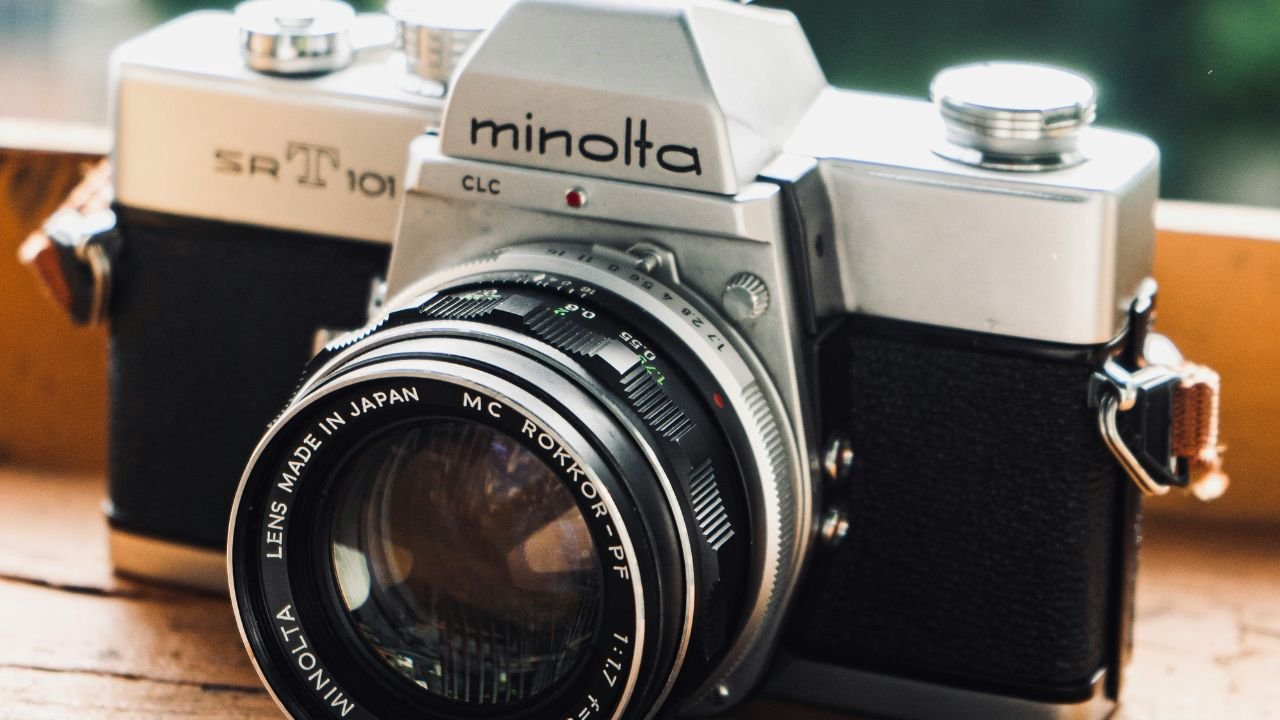Can You Bring A Film Camera On A Plane? Yes, you can bring a film camera on a plane. To protect your unprocessed film from potential damage, always carry it in your hand luggage.
Traveling with your film camera is an exciting way to capture timeless moments. But if you’re planning to bring your film camera and rolls of film on a plane, you might be wondering if there are any special regulations or precautions you need to take.
The good news is that, yes, you can absolutely bring a film camera on a plane, but there are some important considerations to ensure your film is protected and your airport experience goes smoothly.
In this blog post, we’ll dive into everything you need to know about flying with a film camera, from packing tips to TSA regulations, and answer some of the most frequently asked questions about traveling with film.
Contents
- 1 Understanding the Basics: Can You Bring a Film Camera?
- 2 The Best Way to Carry Your Film
- 3 What About Digital Cameras?
- 4 What Happens When Film Goes Through X-Ray Machines?
- 5 What Does X-Ray Damage Look Like?
- 6 Special Considerations for International Travel
- 7 Tips for Keeping Your Camera Safe
- 8 Frequently Asked Questions (FAQs)
- 8.1 1. Can I bring film on a plane if it’s already developed?
- 8.2 2. Can airport security open my film rolls for inspection?
- 8.3 3. What is the best ISO film to carry when traveling?
- 8.4 4. Are there any special rules for traveling with a film camera internationally?
- 8.5 5. Will my digital camera be affected by airport X-rays?
- 9 Conclusion: Can You Bring A Film Camera On A Plane?
Understanding the Basics: Can You Bring a Film Camera?
Yes, You Can Bring a Film Camera!
Whether you’re an experienced photographer or a hobbyist, the answer is yes, you can bring a film camera on a plane. There are no restrictions on carrying a film camera itself in your carry-on or checked luggage.
However, there are some nuances when it comes to carrying film and how to protect it from potential damage during your travels.
While digital cameras have become the norm, film cameras continue to be cherished by many due to their nostalgic charm and unique qualities.
Film allows for a tactile experience in photography, and the results can be stunningly organic. But, as a film photographer, it’s crucial to be aware of how airport security and scanning equipment can affect your rolls of film.
What About the Film?
You’re allowed to bring film rolls through airport security, but they need to be treated with care. The main concern when traveling with film is the X-ray machines used by airport security.
These machines are designed to scan checked luggage and carry-on items, and they use high-powered X-rays to detect potential threats.
While the X-ray machines used on carry-on bags are generally safe for most items, they can be harmful to undeveloped film, especially if the film has a higher ISO rating (e.g., 800 ISO or higher).
The Best Way to Carry Your Film
Protecting Your Film from X-Ray Machines
To protect your film from potential damage, you should carry your rolls in your hand luggage. This way, you can request a hand inspection for your film rolls, which will avoid them going through the X-ray scanner altogether. The key to protecting your film is making sure it’s not exposed to too much radiation.
Packing Tips for Your Film Camera and Film
- Keep Your Film in Your Carry-On: Always store your film rolls in your carry-on luggage. Never place them in checked baggage, as checked bags pass through higher-powered X-ray machines that can cause significant damage to the film.
- Use Clear Plastic Bags: Place your film in a clear, resealable plastic bag, making it easy for security personnel to inspect without having to open your bag. When passing through security, place the bag in the bin for screening.
- Request a Hand Inspection: Don’t hesitate to ask the TSA officer to manually inspect your film if you’re concerned about the effects of the X-ray scanner. The TSA allows for hand inspection of film, and most airport security staff will be familiar with the protocol for handling undeveloped film.
What About Digital Cameras?
Digital cameras, including lenses, batteries, and memory cards, are not affected by X-rays, and you can pass them through the scanner without any issues.
So, if you’re carrying both a film and a digital camera, you won’t have to worry about the digital camera being affected by the security process.
What Happens When Film Goes Through X-Ray Machines?
Low ISO Film
Low ISO films, such as 100 or 200 ISO, are less sensitive to light and less likely to suffer noticeable damage from X-rays. However, the risk of damage is not eliminated entirely, especially if the film undergoes multiple scans.
High ISO Film
Higher ISO films, such as 400, 800, and above, are much more sensitive to light and are more susceptible to damage from X-ray exposure. If you’re carrying rolls of high-ISO film, it’s even more important to request a hand inspection rather than allowing the film to go through the scanner.
What Does X-Ray Damage Look Like?
The most common type of damage caused by X-rays is a fogging effect on the film, which appears as light streaks or a hazy, overexposed appearance. If you notice this type of damage after your trip, it’s likely caused by excessive exposure to X-rays.
Special Considerations for International Travel
Different Countries, Different Regulations
While the rules for traveling with film are relatively universal, some countries may have slightly different security procedures or regulations. If you’re flying internationally, it’s a good idea to check the airport policies in advance. Many airports are equipped with protocols to handle film inspection, but some may have stricter security measures in place.
Understanding Local Customs and Restrictions
Some countries may have more stringent rules regarding the importation of undeveloped film or photographic equipment. Before traveling to a foreign destination, make sure you understand any restrictions that may apply to film cameras and rolls. It’s always better to be prepared and informed.
Tips for Keeping Your Camera Safe
Keep Your Camera in a Protective Case
While your film is important, your camera itself needs protection, too. A padded camera bag is essential for keeping your camera and film safe from bumps and jostling during travel. Always make sure that the camera is securely packed to avoid any potential damage.
Carry Extra Batteries
Film cameras often rely on specific batteries for operation, and you don’t want to run out of power in the middle of a shoot. Carry extra batteries in your carry-on luggage, as checked baggage regulations for batteries can vary. If your camera uses special film, such as Polaroid or instant film, make sure to bring enough film for your trip as well.
Avoid Extreme Temperatures
Film and camera equipment are sensitive to extreme temperatures. If you’re traveling to a very hot or cold destination, be sure to keep your gear in a temperature-controlled environment when possible. Heat can cause film to degrade, while extreme cold can affect the performance of your camera’s mechanical parts.
See Also: Can You Bring Needlepoint Scissors On A Plane?
Frequently Asked Questions (FAQs)
1. Can I bring film on a plane if it’s already developed?
Yes, you can bring developed film on a plane without any issues. X-rays won’t affect developed photos, so you can carry them in your checked or carry-on baggage.
2. Can airport security open my film rolls for inspection?
While airport security can request to open your film rolls for inspection, you can request a hand inspection instead to avoid exposing your film to X-rays. Always carry your film in a clearly marked bag for easy inspection.
3. What is the best ISO film to carry when traveling?
If you’re concerned about X-ray damage, it’s best to travel with low ISO film, such as ISO 100 or 200. These are less sensitive to X-rays and are less likely to suffer noticeable damage.
4. Are there any special rules for traveling with a film camera internationally?
While the rules for film cameras are generally the same worldwide, some countries may have different security protocols or import restrictions. Always check the airport policies of your destination country to be prepared.
5. Will my digital camera be affected by airport X-rays?
No, digital cameras are not affected by X-rays, so you can pass them through airport security without any concerns. However, it’s always a good idea to pack them securely in your carry-on luggage.
Conclusion: Can You Bring A Film Camera On A Plane?
Traveling with a film camera can be a fantastic way to capture the essence of your trip, but it requires a bit of extra care and attention when navigating airport security.
By following these tips, packing your film properly, and requesting hand inspections when necessary, you can ensure your film remains safe and undamaged throughout your journey.
Whether you’re embarking on an international adventure or heading on a domestic trip, rest assured that with a little preparation, you can bring your beloved film camera and film with you without any issues. Happy shooting!

Hello, I’m Janiyah Gibbs—a retired flight crew member and former TSA officer from Alaska, USA. At PlaneCarry.com, I share expert insights on what to carry (and avoid) when flying.

